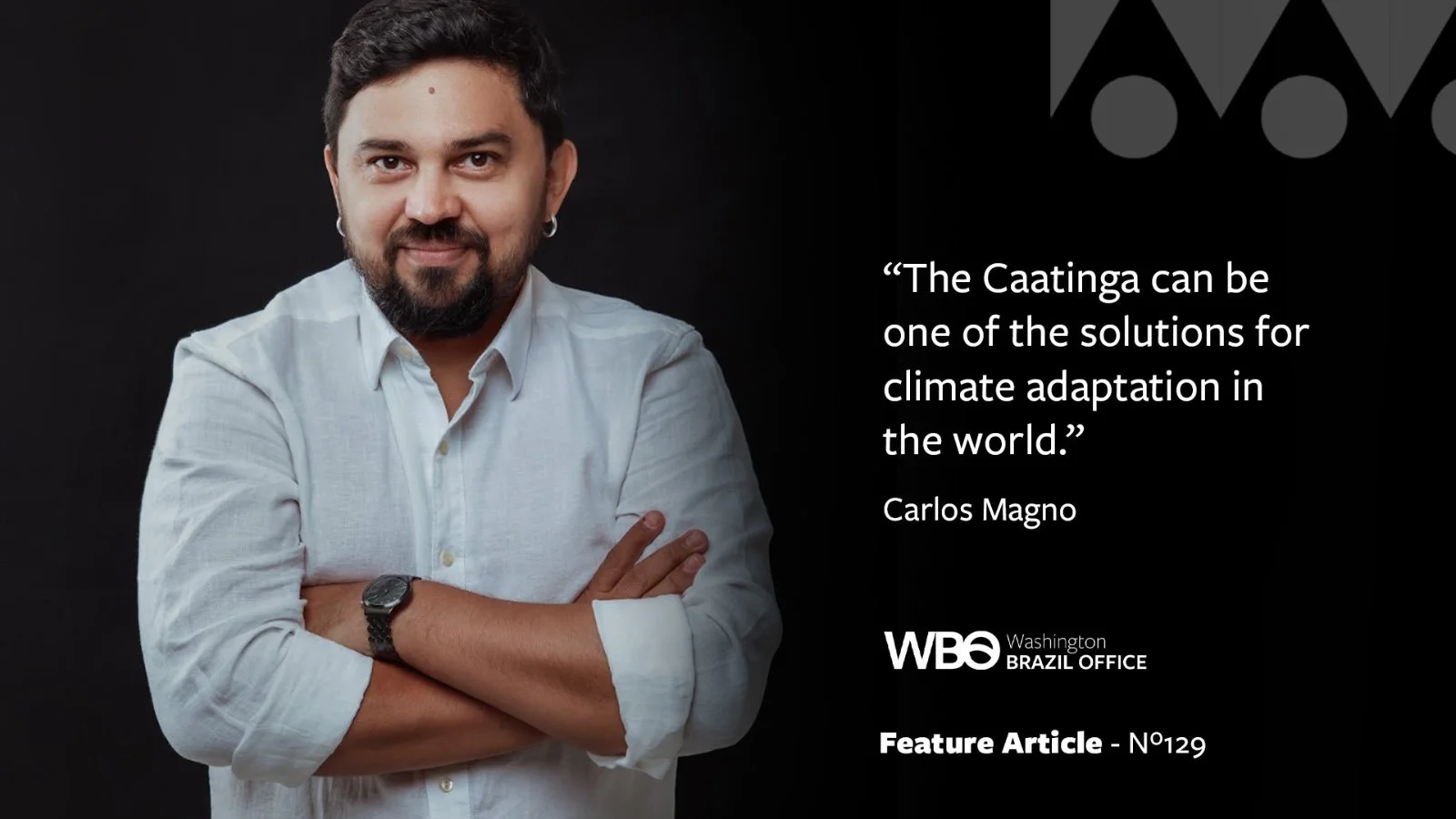The Brazilian Semi-Arid Region as a Global Example of Climate Adaptation
Carlos Magno was born and raised in the semi-arid region of Brazil. He is a father, coordinator of the Sabiá Agroecological Development Center and focal point of the Semiarid Platform of Latin America, Fulbrighter 2022-2023, and Fellow in the climate area of the Rockefeller Foundation. This article was written for issue 129 of the WBO weekly bulletin, published on August 9, 2024. To subscribe to the bulletin and receive it for free, enter your email in the field below.
Information from the Convention of the Parties to Combat Desertification (UNCCD) warns that 70 percent of people in the world who suffer from various types of malnutrition live in dry areas, whether arid, semi-arid, or sub-humid. This classification of drylands by the United Nations considers the amount of rainfall (pluviometry) and evapotranspiration, which results in a balance that tends to be low or negative in these areas. Drylands are spread throughout the world and cover more than 41 percent of the planet's land. They are present on all continents, with large areas of land, such as the Sonoran Desert in the United States, the Sahel region in Africa, and much of Australia.
However, what many people do not know is that Brazil, more specifically the northeastern region, is home to the most populous semi-arid region in the world with around 30 million people. This region has historically been known as Brazil's “problem region” due to the successive droughts that have caused deaths and displaced millions of people in recent decades. Despite the political, economic, and media power of agribusiness in Brazil, approximately 70 percent of the food for domestic consumption comes from family farming.
According to the Food and Agricultural Organization of the United Nations, data from the latest Agricultural Census in 2017 reveal that half of the country's family farming is in the Brazilian Northeast. And this large territory, which also produces food, is threatened by a process of land manipulation, which is transforming semiarid conditions into arid conditions, in a process known as desertification, which was first identified in Brazil at the end of 2023 between the states of Bahia and Pernambuco. In addition to all these aspects, the predominant biome of the semiarid region is the Caatinga, which in Tupi means “white forest” due to its gray coloration when it loses its leaves during the dry season. This biome is almost exclusively Brazilian, with fauna and flora adapted to these climatic conditions.
The Caatinga needs to be considered a strategic biome in the debate on the Brazilian climate. It should be prioritized as a key to understanding socio-ecological resilience processes. Xerophilous plants, for example, exhibit an incredible adaptive capacity, losing all their leaves during dry periods to conserve water, hibernating during the dry season and saving water for more critical moments. We can also talk about the supply of native bee species that co-evolved with the Caatinga plants. In an era of climate change, such biological capacity becomes crucial. Unfortunately, this biodiversity continues to be undervalued and underfunded.
The current climate context also reveals a dispute of narratives in which the Brazilian Semiarid region has been treated as a mere generator of wind and solar energy, due to the significant availability of wind and sun. However, this simplifies and underestimates its complexity. Such initiatives, although important for a clean energy matrix, often do not consider the integral conservation of the biome, generating environmental and social problems in the region. Furthermore, the local knowledge of the communities that inhabit the Caatinga, which over generations has developed strategies to adapt to adverse climate conditions, is often forgotten, despite having an incredible potential for sharing knowledge about processes of adaptation to global warming.
A clear example of this is the droughts in the Amazon that are now beginning to gain notoriety in the press, as an indisputable sign of climate change, while in the Semiarid region, annual temporary droughts have existed forever. Imagine how much accumulated knowledge about these local populations could help in the exchange information with the Amazon populations so that we can collectively understand these characteristics that are here to stay. In the end, we are the same people, whether rural or riverside, who have never caused CO₂ emissions, but who will be the first to suffer their impacts.
Initiatives such as the "One Million Cisterns Program" by the Brazilian Semiarid Articulation (ASA) not only provide water through a social technology for collecting rainwater, but also promote dignity and environmental awareness. This program has already provided drinking water on an ongoing basis to more than 5 million people, establishing itself as one of the largest climate change adaptation programs in the world. The same goes for agroforestry family farming initiatives, such as those evaluated by the Sabiá Center, which are inspired by nature and the benefits for balanced food production.
It is time to recognize and value the Caatinga and the Semiarid regions. While the world seeks solutions to combat climate change, the Caatinga and its peoples already offer lessons in survival, adaptation, and resilience. Their role is fundamental, and it is our responsibility to bring them to the center of climate discussions. The Caatinga cannot continue to be the forgotten biome; on the contrary, we can be one of the solutions for climate adaptation in the world.


